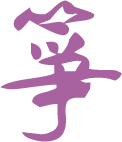|
The koto is a 13-stringed harp-like
Japanese musical instrument.
KotoWorld aims to bring you as much information regarding this remarkable instrument as possible. Unfortunately, I have no time for maintaining the site now. Other site developers, feel free to use the information here in your own sites, but please don't forget to mention where you got it.
The author of this site is Rick Lavin. The text in the right-hand column is contributed by
Anne Prescott.
Basic Information: KotoWorld Home
Site guide and links to related sites Who am I? Discography Visit my general home page
About Anne Prescott
Anne Prescott studied koto with Ando Masateru in the Miyagi School of the
Ikuta-ryu. She began playing koto at Cornell College (Iowa, U.S.A.) and she
visited Japan for the first time in 1982 as a member of the Cornell College
Koto Ensemble. She has a Ph.D. in ethnomusicology from Kent
State University (Ohio, U.S.A) and her dissertation was on the koto composer
Miyagi Michio-his inventions, innovations, and compositions. She plays
shamisen as well. Anne lived in Japan for over 7 years and supported her
koto habit by working for a translation company. She also did the
liner notes for the recordings of traditional music by Kyoto Records (almost
20 releases now). Now she teaches koto in the U.S.
|
a
|
Basic Information: KotoWorld Home
Visit my general home page
 Miyagi Michio (1894-1956) is known as the "Father of Modern Koto Music."
He took the koto in previously unknown directions and was the instigator for
what was the most far-reaching reform movement within koto music. He
changed koto music by inventing new instruments, using new forms, stretching
traditional forms, creating new playing techniques, and restoring popularity
to the genre. Other koto composers and performers soon followed his lead,
and most of today's pre-eminent koto performers, teachers, and composers are
part of the Miyagi legacy.
Miyagi Michio (1894-1956) is known as the "Father of Modern Koto Music."
He took the koto in previously unknown directions and was the instigator for
what was the most far-reaching reform movement within koto music. He
changed koto music by inventing new instruments, using new forms, stretching
traditional forms, creating new playing techniques, and restoring popularity
to the genre. Other koto composers and performers soon followed his lead,
and most of today's pre-eminent koto performers, teachers, and composers are
part of the Miyagi legacy.
Miyagi's reforms were primarily drawn from Western music, and he was the
first composer to successfully introduce Western musical ideas into koto
music. Although Miyagi did not want to abandon traditional koto music, he
thought that there were aspects of Western music which could be incorporated
into Japanese music to make it more accessible to the average Japanese at a
time of increasing Westernization.
Miyagi exhibited an unusual degree of individualism when he broke
with koto music traditions to create a new style of music. In the two
hundred years before Miyagi only a handful of koto players had dared to make
any substantial changes to the koto and its music. When viewed from a
historical perspective today, those changes which occurred before 1907 [the
year Miyagi composed his first work "Mizu no Hentai" (Transformations of
Water)] were minimal compared to those created by Miyagi.
Miyagi began his study of the koto at the age of 7. He had begun to lose
his eyesight shortly after birth, and one of the few acceptable professions
for the blind at that time was to be a koto performer and teacher. When he
was 13 he moved to Korea and he lived there for 10 years before returning to
Japan to begin his career as a performer, composer and teacher. Miyagi
taught in the koto department at the Tokyo Ongaku Gakko (Tokyo Academy of
Music), which after the Second World War became Tokyo Geijutsu Daigaku
(Tokyo National University of Fine Arts and Music). In his position as an
instructor there, Miyagi influenced scores of koto players, teaching them
his new techniques and compositions.
|
"When viewed from a
historical perspective today, those changes which occurred before 1907 [the
year Miyagi composed his first work "Mizu no Hentai" (Transformations of
Water)] were minimal compared to those created by Miyagi."
|
Miyagi was the first traditional performer and composer who was conversant
in both Japanese and Western traditions. He created new playing techniques
for the koto, including pizzicato, staccato, and harmonics. Most of these
techniques are adaptations of Western instrumental practices, but one, the
hajiki, was taken from shamisen music. Miyagi was the first composer for
traditional instruments to utilize the Western classic style of singing. He
also adopted and expanded compositional forms and techniques, experimented
with the Western rondo, ABA, strophic, and variation forms, and the
traditional Japanese kinutamono and tegotomono forms and kaede and kakeai
techniques. He also was the first composer working in a traditional genre
to make significant use of triple meter, and he wrote for groupings of
instruments which had not previously been used by traditional composers.
These include the mixed-instrument quartet, orchestra of traditional
instruments, combinations of Western and traditional instruments, and koto
concerti with Western orchestral accompaniment.
Miyagi's best-known work, "Haru no Umi," is heard everywhere in Japan during
the New Year's holiday. Some of his other famous works are "Mizu no
Hentai," "Ochiba no Odori" (Dance of the Falling Leaves), "Seoto" (Sounds of
the Rapids), and "Tegoto" (Interlude).
Editor's note: Visitors to Tokyo can check out the Michio Miyagi Memorial Hall. Information regarding location, opening times, etc. is available (but only in Japanese) on the web.
|